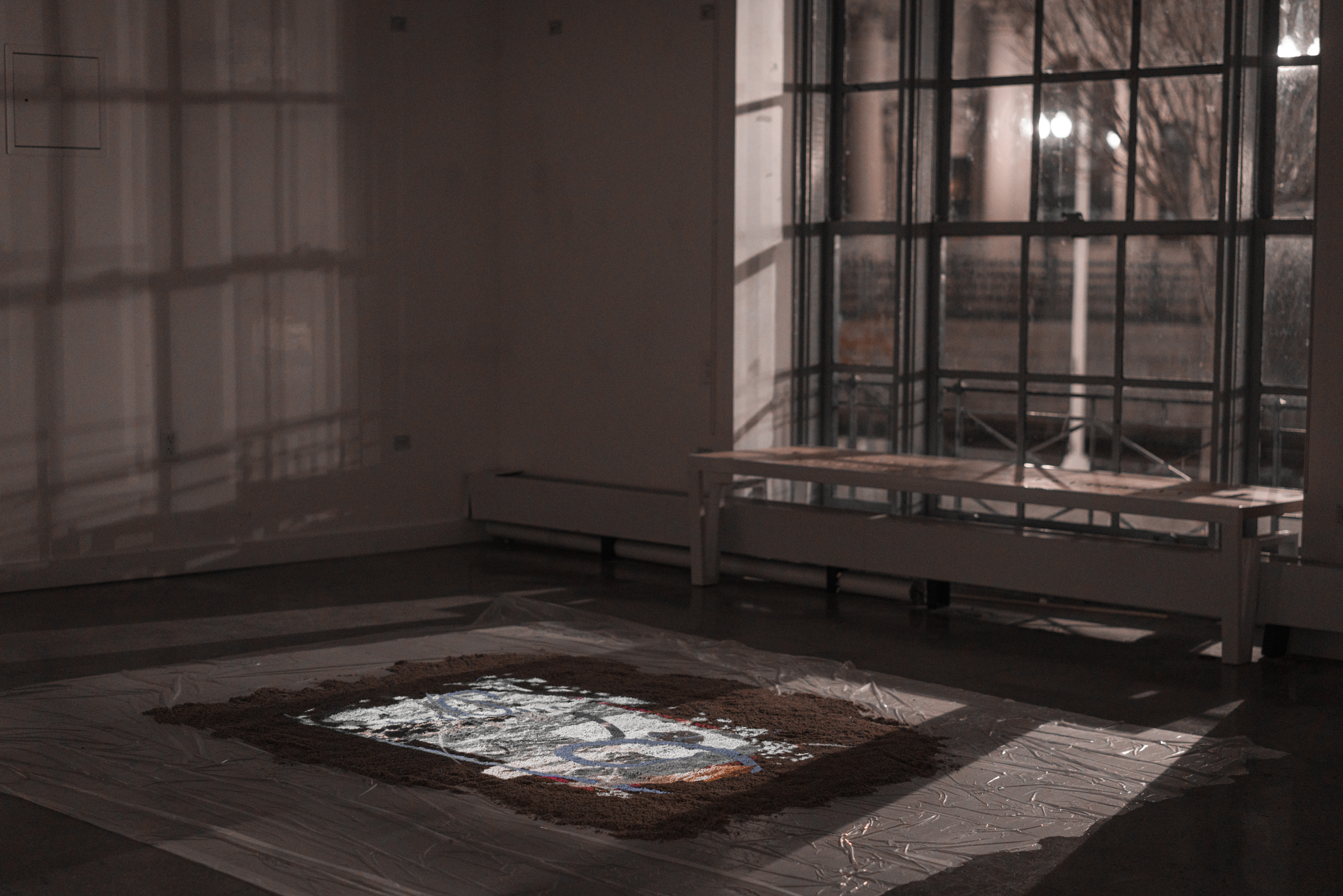
Unsacred Jainamaaz
JAINAMAAZ— The entire earth is a mosque, Islam teaches; wherever a Believer stands with the intention to pray, that site is sacred. The design of the jainamaaz, or prayer rug, is shaped by the visual language of Islamic architecture: use of light to shape space, repetition of geometric forms to create an overwhelming sense of the Infinite. The architecture of the mosque and the design of the prayer rug also share structural elements in common: pillars, niches, directionality towards the qiblah.
LIGHT— Light, or nur, is deeply important as a spiritual element and metaphor in Islam. It is often used in poetic ways to signify the presence of Allah, and to direct the Believer’s attention to the otherworldly. Light is a portal to a different realm, and a Guide out of the darkness. Light is sacred to me, particularly light across water.
FAITH— My relationship with my faith is complex, excruciating, grounding, fraught, and private. As a Muslim woman, while I have visited many stunning mosques drenched poetically with light, I have rarely been able to experience it for myself. Complicating my difficult relationship with my religion is the feeling of never feeling welcome in our sacred halls, never having access to the man-made worship of the holy through architecture and design. As such, I have always felt my most profound spiritual experiences outside in nature, particularly near the ocean, or in quiet intimate moments where I feel like the light is speaking to me directly. This is my sacred.
LIGHT— Light, or nur, is deeply important as a spiritual element and metaphor in Islam. It is often used in poetic ways to signify the presence of Allah, and to direct the Believer’s attention to the otherworldly. Light is a portal to a different realm, and a Guide out of the darkness. Light is sacred to me, particularly light across water.
FAITH— My relationship with my faith is complex, excruciating, grounding, fraught, and private. As a Muslim woman, while I have visited many stunning mosques drenched poetically with light, I have rarely been able to experience it for myself. Complicating my difficult relationship with my religion is the feeling of never feeling welcome in our sacred halls, never having access to the man-made worship of the holy through architecture and design. As such, I have always felt my most profound spiritual experiences outside in nature, particularly near the ocean, or in quiet intimate moments where I feel like the light is speaking to me directly. This is my sacred.
THE PROJECT— Referencing the visual language of Islamic architecture [abstract geometries, repetition, borders, organic/vegetal motifs, and picture planes within planes], I designed a contemporary prayer rug to be literally made of light. The new design emphasizes depth of space and the explosion of energy in search of freedom and balance.
My mark-making makes this design personal, and expresses my continuous search to find myself in my faith, and my continuous dialogue with it. Unlike architecture, it is something unfixed and unbounded.
Every component of the rug is a video of light pulled from my personal video archives [I’ve been capturing and collecting these for years], and then the rug itself is projected onto the ground. On the first night of Ramadan, I built an installation in the GD Commons with a ground plane of sand to further dissociate from architectural space and ground the piece in a sort of otherworldly, nature-defined sacred space. The sand references both my connection to the sea, as well as the origin of Islam in the desert; it is further a metaphor for the ephemerality and boundlessness of this life.
My honest, unsacred, forbidden confessions are written into the piece, while a woman’s recitation of the adhan plays. It is popularly believed that a woman is forbidden from reciting the call to prayer due to the distractingly sensual nature of a woman’s voice.
The result is a layering of forbidden elements to create an honest expression of sacred worship and conversation between myself and my faith. It is also an experiment in questioning what constitutes textiles, and digital textiles, with a prayer rug composed of light and given form, quite literally, through light.
My mark-making makes this design personal, and expresses my continuous search to find myself in my faith, and my continuous dialogue with it. Unlike architecture, it is something unfixed and unbounded.
Every component of the rug is a video of light pulled from my personal video archives [I’ve been capturing and collecting these for years], and then the rug itself is projected onto the ground. On the first night of Ramadan, I built an installation in the GD Commons with a ground plane of sand to further dissociate from architectural space and ground the piece in a sort of otherworldly, nature-defined sacred space. The sand references both my connection to the sea, as well as the origin of Islam in the desert; it is further a metaphor for the ephemerality and boundlessness of this life.
My honest, unsacred, forbidden confessions are written into the piece, while a woman’s recitation of the adhan plays. It is popularly believed that a woman is forbidden from reciting the call to prayer due to the distractingly sensual nature of a woman’s voice.
The result is a layering of forbidden elements to create an honest expression of sacred worship and conversation between myself and my faith. It is also an experiment in questioning what constitutes textiles, and digital textiles, with a prayer rug composed of light and given form, quite literally, through light.




